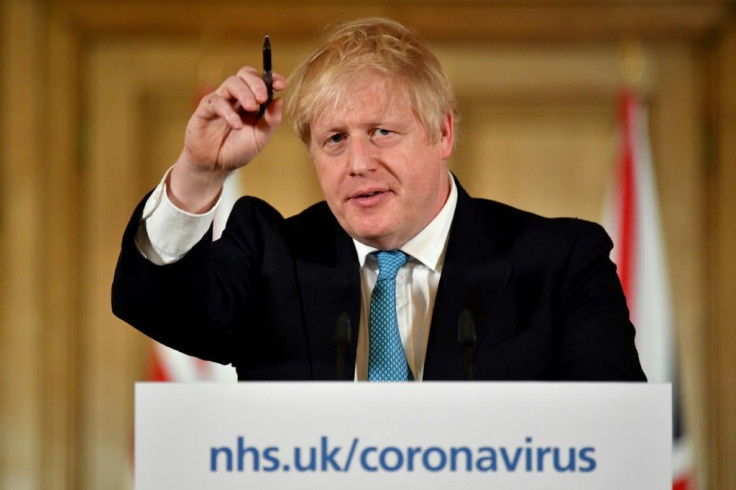Coronavirus UK Deaths Follow 'Similar Trajectory' As Italy, Higher Death Toll Expected

KEY POINTS
- The U.K. now implements a tougher suppression strategy against COVID-19
- Its former mitigation strategy would have led to hundreds of thousands of deaths
- The overarching aim now is to avoid "doing an Italy"
All's not well in the United Kingdom where prime minister Boris Johnson last week was forced to repudiate his widely ridiculed anti-COVID-19 mitigation strategy that would have caused the deaths of hundreds of thousands of people if it had continued.
Right now, U.K. health authorities are attempting to do what most other countries are doing to quell the COVID-19 spread -- ruthlessly suppressing it with mandatory population lockdowns and harsh restriction on public gatherings and travel.
The former mitigation strategy simply asked people with COVID-19 symptoms to self-quarantine for 14 days and for elderly people to avoid social contact. On the other hand, the suppression strategy, which Johnson announced last week, means people are being told to work at home and limit all nonessential human contact over the coming months.
The change in strategy was forced on Johnson after new data on the spread of COVID-19 in Italy suggested merely attempting to mitigate the disease will "likely result in hundreds of thousands of deaths and health systems (most notably intensive care units) being overwhelmed many times over," a reporte from the Imperial College COVID-19 Response Team noted.
"Perhaps our most significant conclusion is that mitigation is unlikely to be feasible without emergency surge capacity limits of the U.K. and U.S. healthcare systems being exceeded many times over."
The report also found that in the most effective mitigation strategy examined, "which leads to a single, relatively short epidemic (case isolation, household quarantine and social distancing of the elderly), the surge limits for both general ward and ICU [intensive care unit] beds would be exceeded by at least 8-fold under the more optimistic scenario for critical care requirements that we examined."
In addition, even if all patients were able to be treated, it predicts there would still be 250,000 deaths in Great Britain and anywhere from 1.1 million to 2 million deaths in the U.S.
Based on this study, scientists say Britain had nowhere near the capacity to cope with an outbreak on that level. It concludes "epidemic suppression is the only viable strategy at the current time. The social and economic effects of the measures which are needed to achieve this policy goal will be profound."

Johnson's critics, however, note the time lost in the move from mitigation to suppression might have ensured the U.K. is doomed to follow the lethal path Italy is treading now.
Uncomfortable statistics from World in Data show the percentage increase in deaths for the U.K. is slightly higher than Italy over a similar 12 day period
As of 1:19 a.m. Eastern Time in the U.S. on Monday, there were 5,745 confirmed infections and 281 deaths in the U.K. The number of deaths was 48 more than on Sunday. In Italy at the same hour, there were 59,138 confirmed COVID-19 cases and 5,476 deaths. Italy reported 793 coronavirus-related deaths on March 21, the largest one-day number of fatalities so far reported in any country since the pandemic started in China in December 2019. The next day, Italian authorities announced a further 651 people had died.
"The numbers are very stark, and they are accelerating," said Johnson of the unnerving U.K. data. "We are only a matter of weeks -- two or three -- behind Italy."
Healthcare experts believe the U.K. is just days away from experiencing a similar trajectory in coronavirus death rates as Italy. Prof. Sir David Spiegelhalter from Cambridge University said the U.K. might face the same problems as Italy because cases are doubling roughly every three days. He said a technique called Poisson regression shows the daily increase in deaths in the U.K. was almost the same as in Italy.
"To compare rates of exponential growth early on in the epidemic, it is best to fit a line to the logarithm of the observed number of deaths each day, using a technique called Poisson regression," said Prof. Spiegelhalter.
"This reveals that, over the 12 days following each country reaching five deaths, the daily increase in underlying death rate in the U.K. (37%) was only marginally higher than that of Italy (35%)."
© Copyright IBTimes 2025. All rights reserved.





















